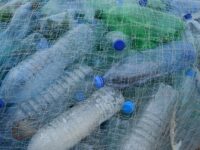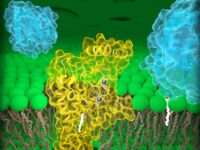Glitter embellishes anything it touches. It turns any mundane and dull poster, project, or Halloween costume into an eye-catcher. That sparkly and glistening glitter, though, ends up as litter in the environment. Although a nostalgic childhood activity, dumping excess glitter that did not stick to your mother’s birthday card’s glue ultimately adds up to be extensive waste. Thankfully, a sustainable alternative could give eco-conscious consumers no need to ditch glitter.
A renewable and plant-based substance called cellulose nanocrystals (CNCs) can form into the colorful and reflective films seen in store-bought glitter bottles. Cellulose is the most basic component of green plants and vegetables, and the power of this plant’s abundant building block can be harnessed to create a beautiful substitute for environmentally harmful plastic glitter.
Cellulose is the most basic component of green plants and vegetables, and the power of this plant’s abundant building block can be harnessed to create a beautiful substitute for environmentally harmful plastic glitter.
These sustainable films and pigments self-assemble through a solvent evaporation process. This first step is surface activation. This is when a liquid CNC substance is laid on a large, flat surface called a web. Confined to the web, the liquid now cannot flow elsewhere. Next, this web with the CNC liquid goes through a coating process that enhances the eye-catching properties of the substance desired for the ultimate glitter. After coating, the liquid on the web is dried and is now in a film form. The CNC is peeled off the web, put through heat treatment, and sized with a coffee grinder into pieces of glitter.
All of these steps sum up the solvent evaporation process. From being placed on the web at a liquid state to ultimately being dried, the product forms itself. After this manufacturing process, the reflective and colorful appearance gives organically-made glitter the shine that consumers love.
This large-scale process is complicated, as there are obstacles when attempting to commercially create sustainable glitter. Once only developed in small Petri dishes, the glitter is now created through utilizing roll-to-roll manufacturing, which is also used in electronics and textile industrial sectors. Through this type of production, the CNC web is continuously fed through roller machines, making this sustainable alternative an achievable commercial product. In addition to defeating this challenge, CNC films first only succeeded in making transparent films, but not colorful ones. The scientific community has now accomplished optimal color pigmentation through accelerated and prolonged heat treatments. Before grinding the film into tiny particles, heat treatments produced glitters across the entire color spectrum that would not degrade in quality when submerged in water. Continuing to research in this industry will allow for a green and guilt-free use of the widely-used party favorite.
If this new glitter hit the markets, it could further prevent micro-polluting our environment. Small plastic glitter receives copious use and disposal without thinking twice. It primarily travels through sewage systems, giving ample opportunity to reach waters from oceans to river basins. Although a pretty product to unknowing consumers, glitter can be deadly to marine life who mistake the microparticles as fueling food. This is entirely human provoked, and it is our responsibility to the planet to find safe alternatives to the accumulating plastic glitter. Cellulose nanocrystals, being organic and plant-generated, offer hope for battling micro-pollution, combating glitter as litter. Alternative glitter makes it possible to decorate birthday cards and dress up your alien Halloween costume with ethical consideration and style!
Sources:
Nature Materials (2021). DOI: https://doi.org/10.1038/s41563-021-01135-8
Journal of Agricultural and Environmental Ethics (2019). DOI: https://doi.org/10.1007/s10806-019-09785-0
Image courtesy of Wikimedia Commons


